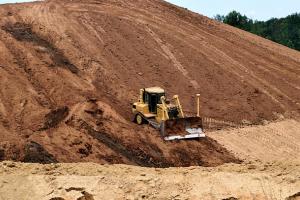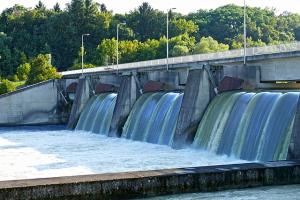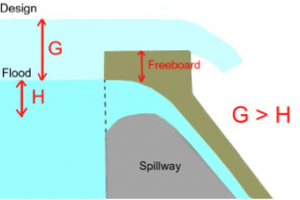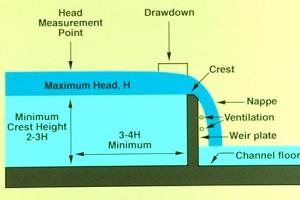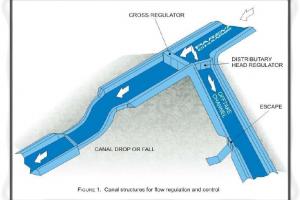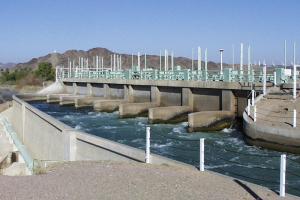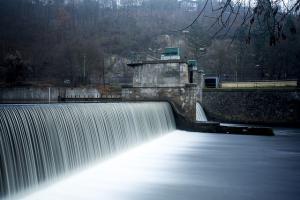Distributary Head Regulator - Definition, Working Mechanism
Definition:
The distributary head regulator is constructed at the upstream end (i.e., the head) of a channel where it takes off from the main canal or a branch canal or a major dis-tributary. The distributary head regulator should be distinguished from the canal head regulator which is provided at the canal headworks where a canal takes its supplies from a river source. The distributery head regulator serves to:
- Divert and regulate the supplies into the distributory from the parent channel
- Control silt entering the distributary from the parent channel
- Measure the discharge entering the distributery.
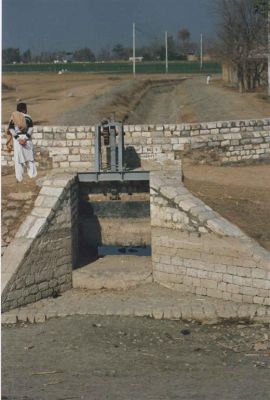
Distributary Head Regulator
For the purpose of regulating the supplies entering the offtaking channel from the parent channel, abutments on either side of the regulator crest are provided. Piers are placed along the regulator crest at regular intervals. These abutments and piers have grooves (at the crest section) for the purpose of placing planks or gates. The supplies into the off-taking channel are controlled by means of these planks or gates. The planks are used for small channels in which case manual handling is possible. The span of hand-operated gates is also limited to 6 to 8 m. Mechanically-operated gates can, however, be as wide as 20 m.
An off taking channel tends to draw excessive quantity of sediment due to the combined effects of the following:
- Because of their smaller velocities, lower layers of water are more easily diverted into the off taking channels in comparison to the upper layers of water.
- Sediment concentration is generally much higher near the bed.
- Sediment concentration near the banks is usually higher because of the tendency of the bottom water to move towards the banks due to difference in central and near bank velocities of flow.
As such, if suitable steps are not taken to check the entry of excessive sediment into the off-taking channel, the offtaking channel will soon be silted up and would require repeated sediment removal. Sediment entry into the off-taking channel can be controlled by causing the sediment to concentrate in the lower layers of water (i.e., near the bed of the parent channel upstream of the off taking point) and then letting only the upper layers of water enter the off taking channel.
Concentration of sediment in lower layers can be increased by providing smooth bed in the parent channel upstream of the off taking point. The smooth channel bed reduces turbulence which keeps sediment particles in suspension. In addition, steps which accelerate the flow velocity near the banks would also be useful. It should also be noted that the alignment of the off-taking channel also affects the sediment withdrawal by the off taking channel. Hence, the alignment of the offtaking distributary channel with respect to the parent channel needs careful consideration. The angle of off take may be kept between 60° and 80° to prevent excessive sediment withdrawal by the offtaking channel. For all important works, the alignment of off-taking channels should be fixed on the basis of model studies.
For the purpose of regulating the discharge in the distributary, it is essential to measure the discharge for which one can use gauge-discharge relationship of the distributary. However, this relationship is likely to change with the change in the channel regime. Hence, it is advantageous to use head regulator as a metering structure too.



